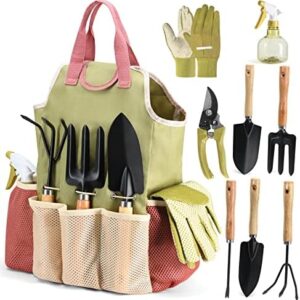As gardeners, we all know the joy of watching our plants grow and flourish. There’s something truly magical about seeing a tiny seed sprout and transform into a beautiful, vibrant plant. But what happens when that plant grows too large for its current pot or location? How can we ensure that our beloved plants continue to thrive and multiply? This is where the art of plant division comes in.
Plant division is a technique that allows gardeners to propagate their plants by separating them into smaller sections and replanting them in new locations. This process not only helps to control the size of a plant, but it also allows us to create new plants to share with friends and family. In essence, it’s like passing on a piece of your gardening legacy to the next generation.
The first step in plant division is to choose the right plant to divide. Most perennials are excellent candidates for division, as they tend to grow quickly and can become overcrowded over time. Some common examples of plants that can be divided include hostas, daylilies, and ornamental grasses. It’s important to wait until the plant is actively growing and not in a dormant state, as division is most successful when the plant is actively growing and can quickly establish itself in its new location.
Once you’ve selected a plant to divide, the next step is to prepare the plant for division. Start by watering the plant thoroughly a day or two before dividing it. This will help to loosen the soil and make it easier to separate the plant’s roots. You’ll also want to make sure you have the right tools on hand, including a sharp pair of pruners or a garden knife.
When it comes time to divide the plant, start by carefully digging up the entire plant, taking care not to damage the roots. Shake off any excess soil to expose the plant’s root system. Look for natural divisions or sections within the plant where you can easily separate it into smaller pieces. In some cases, you may need to use a sharp tool to carefully cut through the plant’s roots.
Once you’ve divided the plant into smaller sections, it’s time to replant them in their new locations. Make sure to prepare the planting site by loosening the soil and adding any necessary amendments, such as compost or fertilizer. Plant each section at the same depth it was originally growing and water them well to help settle the soil around the roots.
After replanting the divided sections, continue to water them regularly and monitor their growth. It’s important to keep a close eye on the newly divided plants to ensure they establish themselves in their new locations. You may also want to consider applying a layer of mulch around the plants to help retain moisture and suppress weeds.
Over time, you’ll likely see the divided plants begin to grow and thrive in their new locations. It’s truly a rewarding experience to watch as the plants you’ve divided continue to flourish and multiply. And who knows, you may even find yourself dividing them again in the future to create even more plants to share with fellow gardeners.
In conclusion, plant division is a valuable technique that allows gardeners to propagate their plants and ensure their continued growth and success. By following the steps outlined above, you can confidently divide your plants and pass on a piece of your gardening legacy to the next generation. So grab your pruners and get ready to dive into the art of plant division – your garden will thank you for it!






